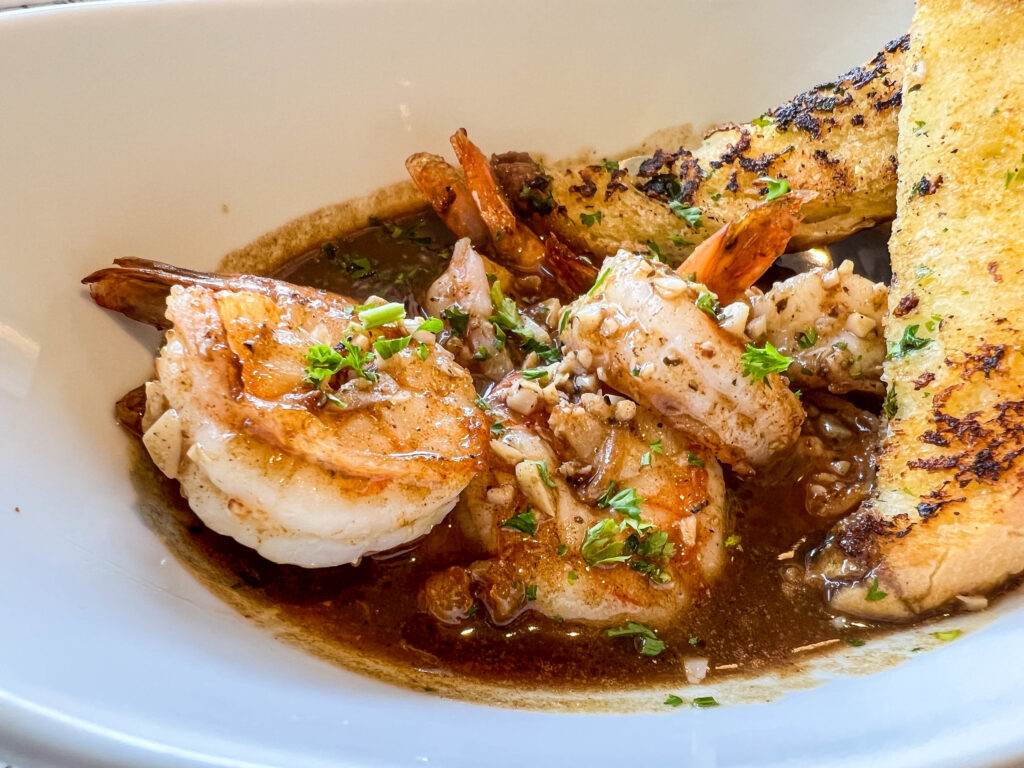BBQ shrimp isn’t really barbecue, but it is delicious and worth the try.
The Gulf Coast has a long tradition of creatively naming dishes when it comes to using the term “barbecue,” especially when it comes to seafood.
If we are sticklers for nomenclature (and Texans definitely are), “barbecue” is defined as cooking and flavoring meat with heat and smoke, using an appliance (smoker) in which the fire is on the side (offset) of the cooking chamber.
To be sure, other countries and cultures are not so exacting when it comes to this term. “Barbecues” around the world — think Australia — refer to direct-heat cooking, where the meat is placed directly above the heat source.
Even in the U.S., a “backyard barbecue” traditionally refers to cooking meat on a kettle-style grill over direct heat. As Texans, we have all visited family in other parts of the country where they host a “barbecue” that is technically “grilling” meat over direct heat.
Depending on the status of our relationship with these family members, we may launch into a soliloquy of the crucial difference between grilling and barbecuing. Though it may result in the weary eye-rolls of family members, we as Texans have an obligation to educate the rest of the country about the correct usage of one of the most honored words in the Lone Star State lexicon.
Not so fast, my fellow Texans. We, too, are guilty of incorrectly applying the term “barbecue” to other dishes.
The most famous example is “BBQ crabs.” This is a dish native to southeast Texas and features whole blue crabs dredged in a spicy seasoning and then deep fried. Invented at the legendary Granger’s restaurant in Sabine Pass in the 1940s, it is still a standard menu item in places like Beaumont and Port Arthur.
However, the only tenuous connection to barbecue is the flavor profile that includes lots of salt, paprika and cayenne pepper — all ingredients you can find in a brisket dry rub or barbecue sauce.
Another seafood dish adopting the barbecue nomenclature is “BBQ shrimp.” Though originating in New Orleans, you can find it on menus in southeast Texas.
Again, there is no connection here to the technical definition of barbecue. Sure, we see grilled shrimp on plenty of menus in Houston, but that is not the same as the Creole-flavored BBQ shrimp from our Louisiana cousins.
BBQ shrimp is all about the sauce, which may explain the name.
Made famous and still featured on the menu at Mr. B’s Bistro in New Orleans, the dish features unpeeled, head-and-tail-on shrimp sauteed in a spicy, savory liquid redolent of butter, garlic and Worcestershire sauce. It is, indeed, reminiscent of a vinegar-based barbecue sauce. Strips of toasted French bread are provided for sopping up any remaining sauce.
In Houston, the newly-opened Gatlin’s Fins & Feathers restaurant (from the same family as Gatlin’s BBQ) makes an excellent southeast Texas-inspired version.
The sauce features big-and-small bits of fresh garlic marinating in all the traditional ingredients of the dish, with an extra dash of lemon juice to add some bright acidity to the richness of the butter and the super-savory Worcestershire sauce. Instead of traditional whole shrimp, they use tail-on, peeled and de-veined Gulf shrimp.
Though purists may insist that head-on and unpeeled shrimp must be used, I’m a big fan of the more user-friendly, already-peeled shrimp. In addition to the shrimp, long strips of crispy, pillowy garlic toast are included to soak up the last of the don’t-call-it-barbecue sauce.


